What is "Beautiful Living"? <Part 1>

Setsuko Yamada
Coordinator

Hirokazu Tanaka
Dentsu Inc.
This series explores what constitutes a "beautiful way of living," presented by the Beautiful Way of Living Research Institute (※). The institute reexamines practices and philosophies long embedded in the daily lives of the Japanese people, proposing them in contemporary, accessible forms through diverse activities.
For example: "Living in harmony with nature," "Valuing the process and attitude over avoiding inconvenience or effort," and "Cultivating personal wisdom and skills." Like the continuity of life itself, this might be seen less as an end result and more as the accumulation of daily efforts. While striving daily might seem a bit daunting, we wanted to learn from those who practice it effortlessly, without finding it burdensome. Hirokazu Tanaka of the Beautiful Way of Living Research Institute (Dentsu Inc.) spoke with our coordinator, Professor Setsuko Yamada, to gather insights.
*For more about the Beautiful Living Research Institute, click here
The "Strength of Conviction" That Created Encounters with the Right People
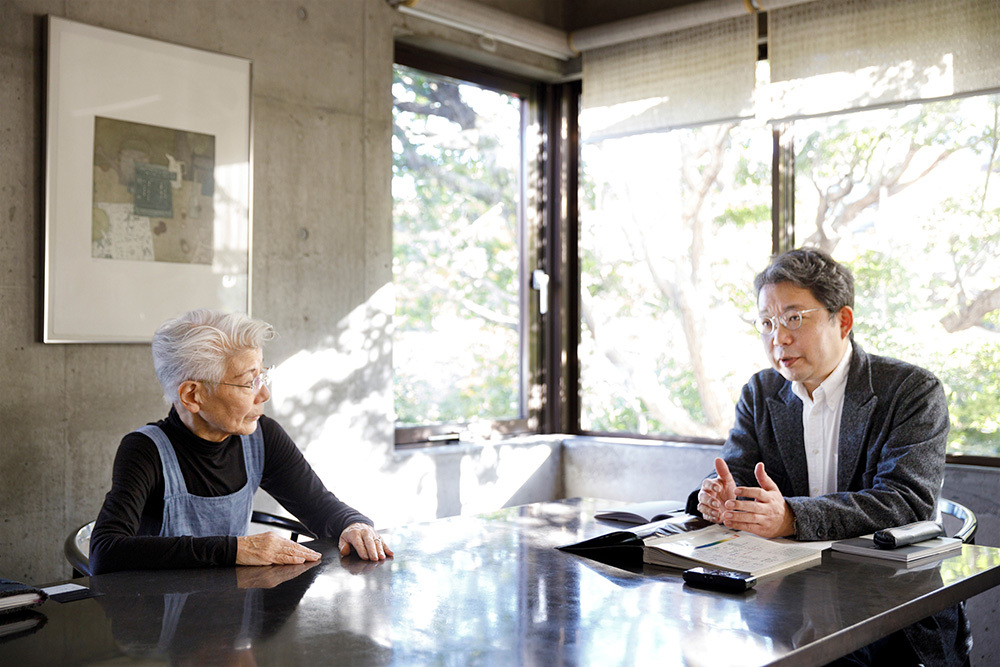
Tanaka: Professor Setsuko Yamada has long dedicated her work to enriching daily life by applying the Japanese spirit, craftsmanship, expressive power, and perspective on living to contemporary lifestyles. From the inaugural "Japanese Tableware Exhibition" held at Matsuya Ginza in 1977 to her recent production of "Forms of Prayer" for a long-established Buddhist altarware maker in Aizuwakamatsu, I was drawn to how she values Japan's primal sensibilities alongside modern design.
Yamada: When we planned the "Japanese Tableware Exhibition," Japan was in an era of rapidly increasing global orientation. Precisely because of that, I felt it was necessary to create a comprehensive collection of tableware that enriched daily life while adapting to changing lifestyles, grounded in the aesthetic sensibilities cultivated in Japan, and to hold an exhibition.
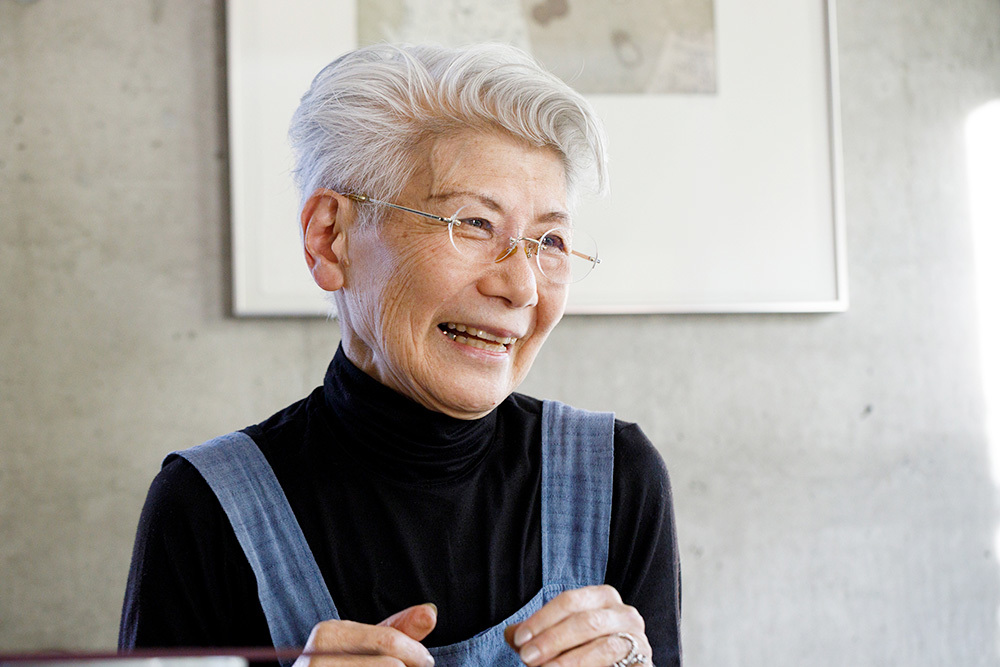
Tanaka: That was just before the publication of "Japan as Number One" in 1979, so the mood for reevaluating Japanese tradition hadn't really taken hold yet.
Yamada: Yes. Later, in 1982, the birth of "Chanoha," a Japanese tea ceremony space opened in the basement food hall of Matsuya Ginza, also stemmed from a sense of urgency—a feeling that "something must be done" for the culture of Japanese tea, which had been familiar to the people of this country, yet was being overshadowed by coffee, black tea, and canned beverages. It all began when the then-food department manager at Matsuya, who listened to my story, introduced me to the young head of "Chanoha."
So, when you keep holding onto your own thoughts and wishes like that, someone comes along to throw you a lifeline... (laughs).
And fortunately, it seems to have led to encounters with the people I was meant to meet.
Tanaka: That harmonious way of being truly resonates with what I consider a "beautiful way of living." You must possess a unique "way of holding your thoughts" that naturally draws people's support.
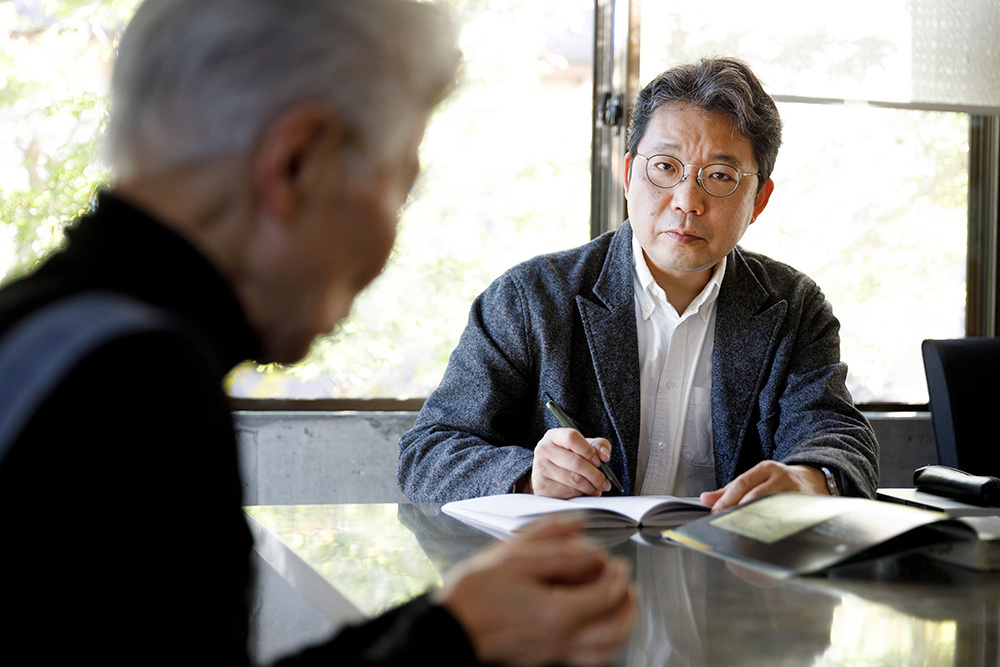
Everyday life is a continuous learning experience
Yamada: If there is anything unique about my way of thinking, it might stem from the environment I grew up in and the series of extraordinary encounters I've had. Coming from a family line where my grandfather and father, pioneers in journalism, founded a newspaper company in Shinshu, our home was always bustling with diverse visitors. My grandmother and mother skillfully managed this flow, and I, along with my sisters, naturally helped out and listened in.
I believe the bonds with people and the appreciation for the seasons cultivated there became the foundation of who I am. Among these, an unforgettable formative experience was the several years I spent in Kawaji, Iida City, Nagano Prefecture, at the home of my father's childless sister.
I lived in Kawaji from age three until first grade, and I absolutely loved playing at the grandest house in the area, the Sekijima residence. That house had seven storehouses, a pond where irises and lotus flowers bloomed, and a garden mound with a tea pavilion at the back. Looking back now, it was a place that embodied the world of the Rinpa school. During the Taisho era, the family would invite the Ichikawa Danjuro troupe from Tokyo during the agricultural off-season. They would perform kabuki on the wide veranda in the garden, rewarding the villagers for their daily toil.
The grandmother there spoke with a particularly beautiful country accent. One day, as the children played in the garden, she said, "Starting tomorrow, you see, it's the day when spring turns to summer, you see. We must change out the tools, you see. So, you see, I'll need your help, you see."
Then, she gave boxes—light ones for the smaller children, larger ones for the bigger ones—that must have held precious tableware, saying, "Now, everyone must carry them together." It was a large house, with stairs, and the distance to the storehouse was considerable. Yet, we children playing there were treated the same as the Sekijima children. "You must carry them carefully in both hands," she would say, "and you must not fall."
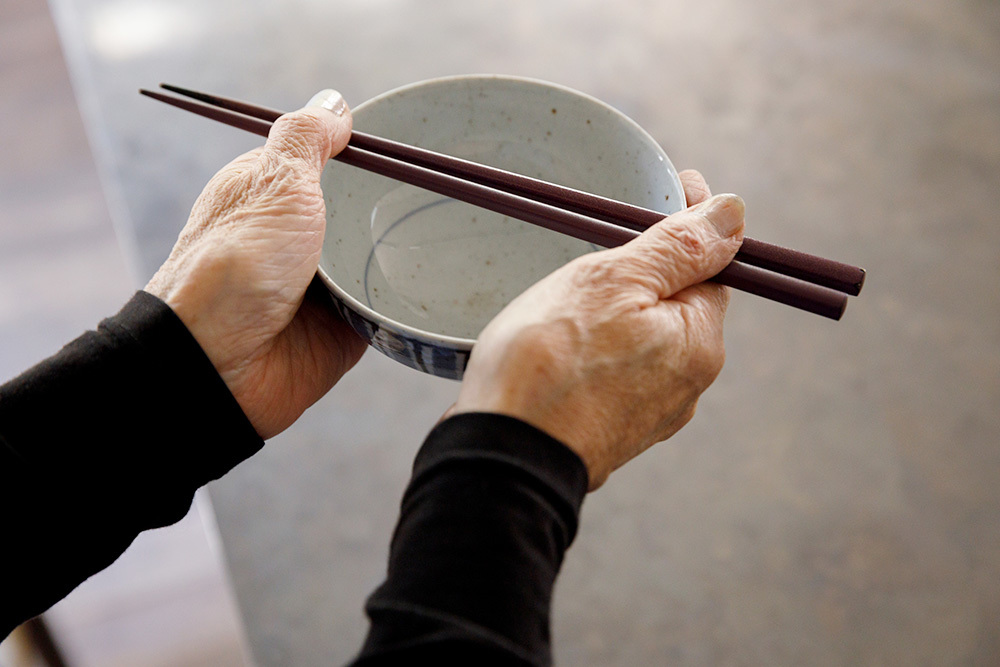
Tanaka: It sounds like a scene from a movie. In terms of life itself, adults and children are equal...
Yamada: Every child was treated with such care. And when they'd pour us tea as a "reward for helping," they'd say things like, "Now, tea, you see, must never be poured hastily," and "From the right bowl to the left bowl. Then from the left to the right, little by little, bit by bit. If you don't do it this way, everyone won't get equally delicious tea."
Looking back, I realize that was the beginning of learning the proper way to brew delicious Japanese tea, which later connected to "Tea Leaves."
On other occasions, we were treated to seasonal rice dishes at the tea pavilion on the artificial hill in the back garden, which was a delight for us children. Each of us was taught how to hold and carry our tea bowls and chopsticks, enjoyed the meal at the tea gathering, and upon leaving, was given a single flower wrapped in washi paper with the words, "This is a souvenir for your family." It was an unforgettable place for learning the aesthetics of daily life.
Being Naturally Nurtured by "Encounters with People"
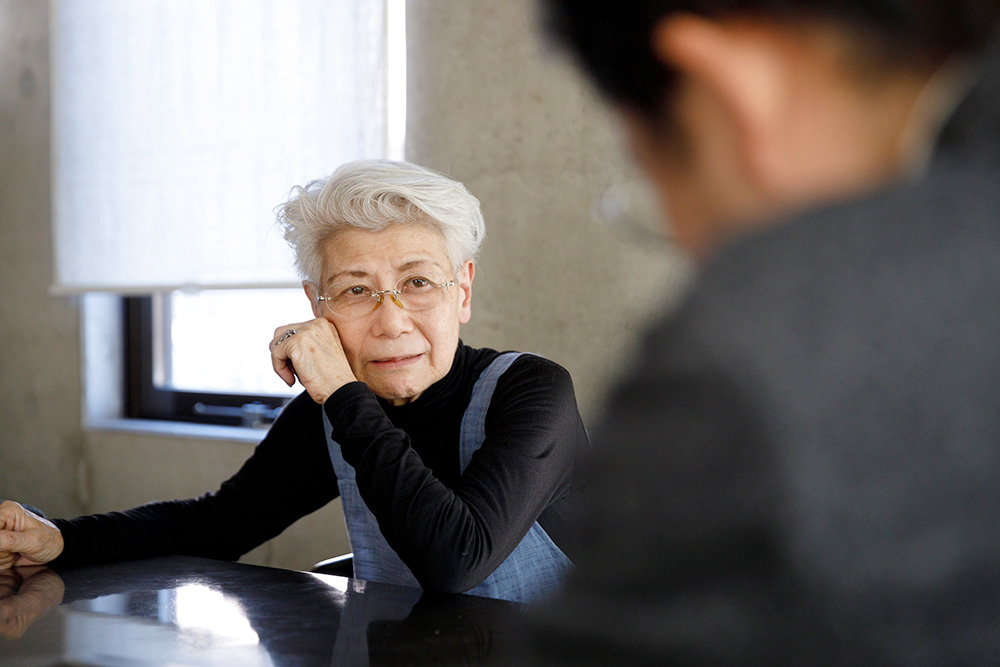
Tanaka: So you were in an environment where you unknowingly learned Japanese traditions and customs within your everyday life. On the other hand, it's interesting that you later attended Tama Art University and broadened your interests to include modern design.
Yamada: People who made lacquerware, ceramics, or painted pictures were always coming and going at our house. Seeing the art magazines and foreign magazines that arrived every month, I had a sense that "the age of design might be coming." So, in 1962, I entered the Pattern Design Department at art college. Back then, it wasn't called the Design Department; it was the Pattern Design Department. At that time, going to see the design exhibitions at Matsuya was the place design students aspired to visit. Since 1955, Matsuya had been promoting the Good Design movement, featuring dedicated sales floors for selected design items and hosting exhibitions... For design students, it was said, "If you don't go to Matsuya, you'll fall behind the times."
One exhibition that left a strong impression was when Marimekko textiles—now known to everyone—were displayed under the skylight of Matsuya's central atrium. The sheer boldness and innovation of the design, expression, and presentation were breathtaking. It made me think, "I absolutely must visit that country."
Tanaka: How modern!
Yamada: While conscious of "overseas design" and "the future of design," I advanced to the Textile Design Department in my second year. University classes were often tedious, so after my first-year summer break, going to Mashiko with friends to make pottery became my greatest joy. An unexpected encounter there with the ceramic artist Shoji Hamada was a major event. Many art students gathered in Mashiko back then, and one day, Hamada-sensei invited us: "Come help clean the house."
When the cleaning was done, he would appear, saying "Good work," and then, almost like a reward, declare, "These are things I, Hamada, thought were good and collected," showing us pieces from his collection—starting from his early days studying in England and including items gathered both domestically and abroad—while saying, "Good, good, aren't they?" His words, "Just remember the path: Hamada liked these things, and now he makes such <things>," and the way he spoke, remain an unforgettable scene.
Tanaka: What a wonderful education...
Yamada: I truly believe I was a fortunate person, as the saying goes, "When you walk, you encounter people and things." I don't think I had any particular ability myself, but I had many encounters and experiences that I felt compelled to share as a storyteller for the present day.
Tanaka: Walking is important, and then meeting the right people there—it brings us back to the beginning, but I think there's something about you that naturally draws people in.
Yamada: But you know, I never encountered these things alone. Each time, I had companions. It was by connecting the threads of fate with those people, things, and events that I was able to meet even more extraordinary individuals. So, I feel strongly that I was nurtured by <nature>, <people>, and <events>.
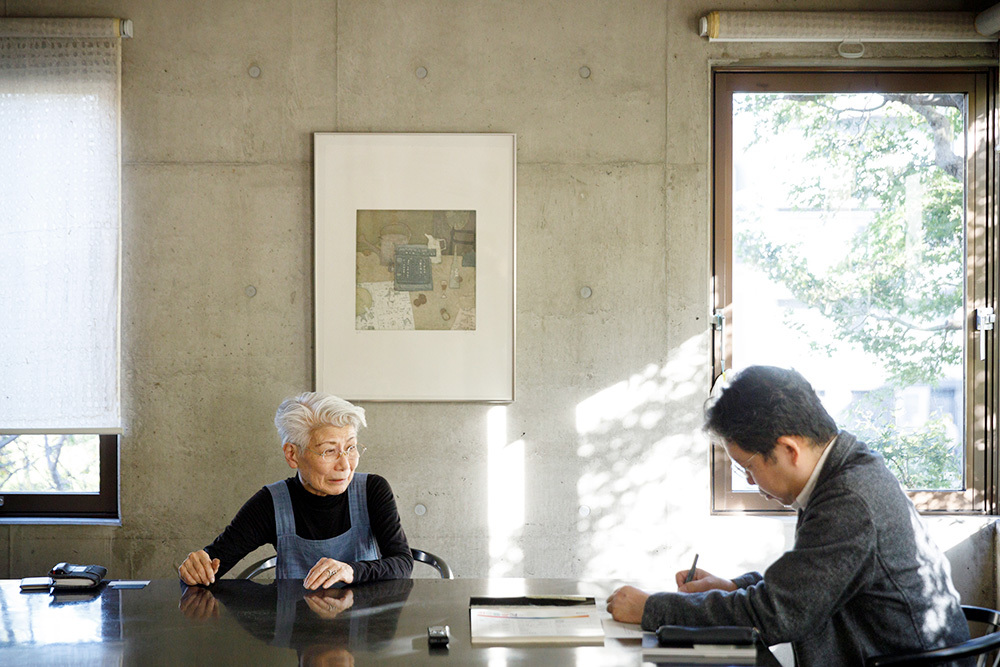
What led to my entry into the Sori Yanagi Office
Yamada: My encounter with Mr. Sori Yanagi also began when a close friend, who had secured a job at Yanagi's office starting in his fourth year and was already commuting there, invited me, saying, "He's an amazing teacher, you should meet him." At the Yanagi office back then, there was a daily tradition of preparing staff lunches using a thousand-yen material budget. We would eat together with the master, using stainless steel bowls and white porcelain dishes that are now recognized as Good Design classics. This was an era when a bowl of tanuki soba cost around 80 yen.
On the very day I first visited, there were guests from Italy. My friend mentioned, "This person is a great cook," and so my friend and I ended up being tasked with preparing a meal for about ten people on a budget of 4,000 yen. As I was leaving that day, the professor said, "There's no point in going to school. Come here starting tomorrow." It was such an incredibly fortunate turn of events that I simply bowed deeply and said, "Yes."
Tanaka: So you passed the office entrance test through cooking, huh? (laughs) By the way, how did you learn to cook?
Yamada: I didn't take any special lessons. For example, since our house always had many guests during New Year's, the three sisters were inevitably roped into helping prepare the osechi dishes starting from year-end. I suppose it just naturally stuck with me, even while grumbling, "Why did I have to be born into this family?" (wry smile). Our parents also assigned tasks suited to each of our strengths. From New Year's Day morning through the first three days of the year, I was in charge of plating.
Tanaka: Beyond the taste of the dishes, the presentation itself must have had that "Ah, that's it!" quality, right?
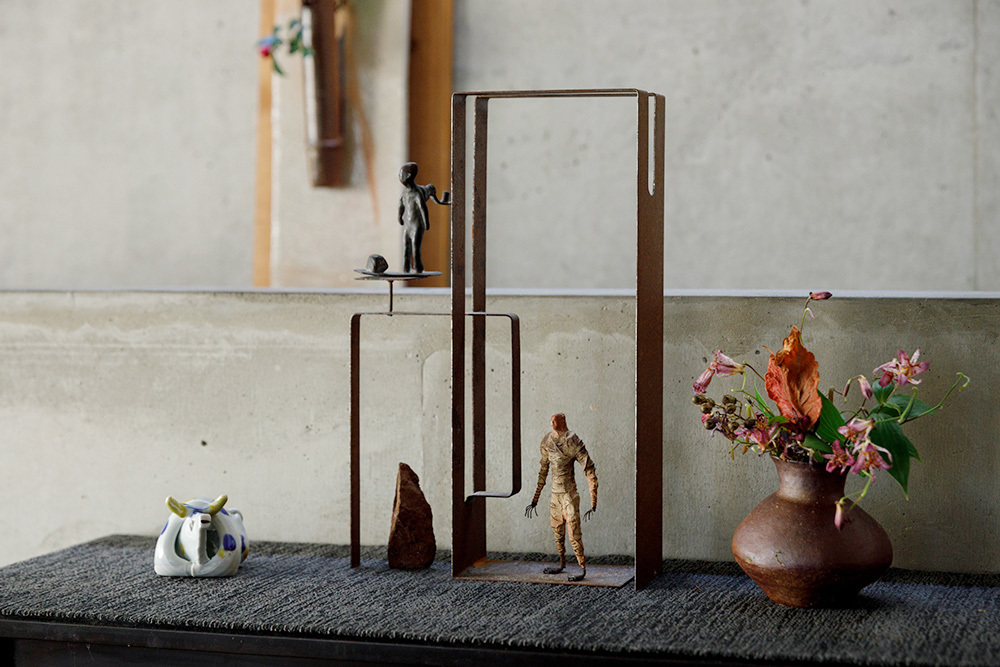
Yamada: I'm not sure about that. But at Yanagi's office, a keen sense of aesthetics was always essential. There's one unforgettable incident: one morning, the moment I opened the office door, Yanagi-sensei's angry shout of "Go home!" hit me. So I closed the door again, unsure why, and cautiously opened it once more. Again, a loud voice: "Didn't I tell you to go home?" I bowed my head and said, "Why? I'm sorry, please tell me." He replied, "The color of your face today and the color of your lipstick don't match at all. Don't come to the office if you can't even tell that." It was an unexpected harshness. There are other episodes where I was admonished for carelessness, for being swept up in trends without self-reflection. I constantly recall them so I won't forget.
Baptism in Gaudí's Architecture
Tanaka: After graduating from university, you went to Europe in 1968.
Yamada: Yes. One day, Professor Yanagi told me, "Go see the world first, then think about what you should do." That's why I embarked on my first journey to Europe, the land I'd longed to see. Europe was captivating, each country possessing its own alluring character. Even Gaudí's architecture, which I'd previously thought strikingly bizarre, blended seamlessly into the cityscape of Barcelona, Spain, surprising me.
For me, who had only a vague longing for Europe at the time, it was like having a bucket of cold water dumped over my head. Though my stay was brief, it became the catalyst for me to reexamine Japan and resolve to study it anew.
Tanaka: Did you find an answer to the assignment from Professor Yanagi?
Yamada: Yes. It was rediscovering that the very daily life I had almost forgotten—like the old-fashioned tales of my childhood along the rivers of southern Shinshu, or being made to prepare "osechi" at our home in Nagano City—held crucial hints for what I should do going forward.
I feel profound gratitude that my life has always been blessed with good encounters that opened new paths. These have come from various people— , my grandfather in the countryside, my grandmother, or those active on the front lines—and I have constantly learned from many individuals, many things, and diverse settings.
(Continued in Part 2) The Beautiful Living Research Institute
We rediscover practices and philosophies long embedded in Japanese daily life, proposing "Beautiful Living" principles—such as "living in harmony with nature," "valuing process and attitude over convenience," and "cultivating personal wisdom and skills"—through various activities adapted for contemporary acceptance. Our calendar app "Kurashi no Koyomi" (The Calendar of Living), which introduces and proposes seasonal lifestyle culture aligned with the "Seventy-Two Seasons," has reached 770,000 cumulative downloads. The book "Kurashi no Koyomi" is a long-selling title with 10,000 copies sold.
https://www.kurashikata.com/
Was this article helpful?
Newsletter registration is here
We select and publish important news every day
For inquiries about this article
Author

Setsuko Yamada
Coordinator
Born in Nagano Prefecture in 1943. After graduating from Tama Art University, she established the Setsuko Yamada Office in 1974. While working as a coordinator at Matsuya Ginza, she proposed and planned various events, sales floors, and exhibitions. She also began guiding local craft production. From 1999, she promoted the planning and strategy for Arte Meister in Aizuwakamatsu and its antenna shop, Gallery Kuchiyaya. She consistently proposes places where people and things meet and creates experiences from the perspective of everyday users.

Hirokazu Tanaka
Dentsu Inc.
Since joining Dentsu Inc., he has worked across marketing, promotion, and creative domains on campaign planning, product development, brand development, and content development. He is currently engaged in new business development and solution development through digital communities. Privately, he serves as the representative director of the General Incorporated Association Tanaka Hirokazu no Kai and is the secretary for the "Tanaka Hirokazu Movement," which gathers people sharing the same name. He co-authored the book Tanaka Hirokazu-san with 14 other Tanaka Hirokawans for publicity purposes. His edited works include "The Calendar of Daily Life" (Heibonsha), compiled by the Beautiful Way of Living Research Institute, and "Let's Discuss Japan" (Maruzen Planet), by the 27th cohort of Forum 21's Umeshimura Juku. He also serves as Secretary General of the Tohoku Youth Orchestra General Incorporated Association and authored "Sound the Hope: Connecting to the Future Through the Tohoku Youth Orchestra" (Froebel-kan Nonfiction).

